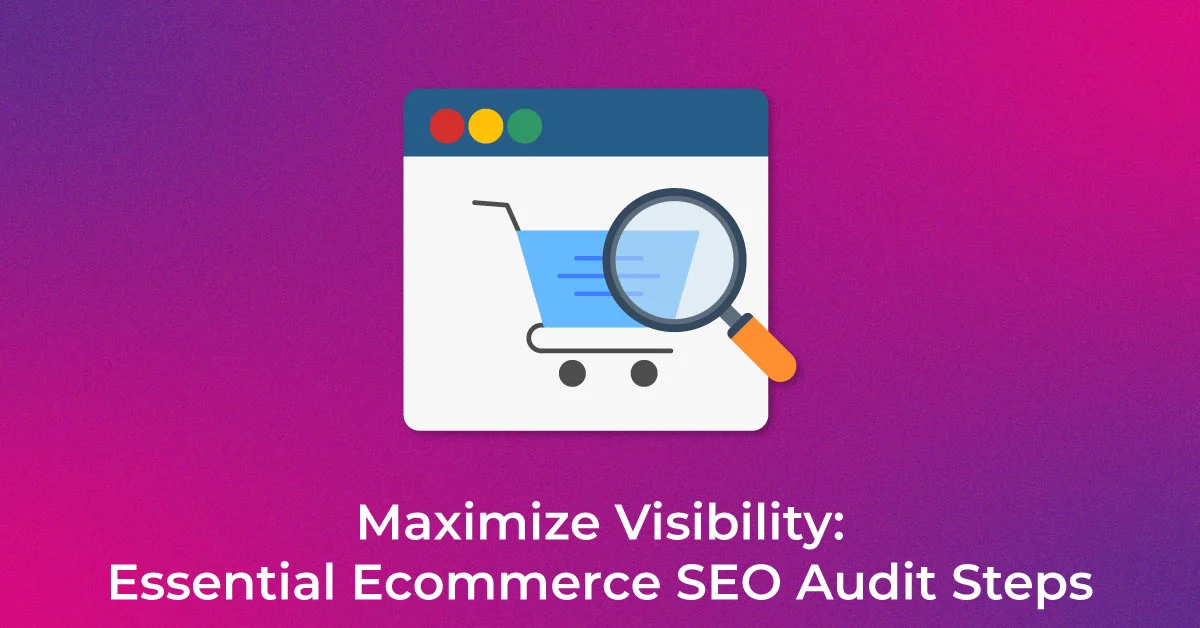Business
The Ultimate Guide to Conducting an eCommerce SEO Audit in 2025

Introduction: Why an SEO Audit Matters in 2025
In 2025, the eCommerce landscape is more competitive than ever. Search engine algorithms have become smarter, focusing heavily on user intent, content quality, and technical performance. A one-time optimization is no longer enough. If you’re running an online store, conducting regular SEO audits is crucial to stay visible and relevant on search engines.
This guide will walk you through how to perform a complete eCommerce SEO audit in 2025 that aligns with Google’s latest standards and helps your store rank better.
Step 1: Evaluate Site Architecture and Crawlability
A clear, logical site structure helps both users and search engines.
Checklist:
- Is your site organized with categories and subcategories?
- Do your important pages sit no more than 3 clicks away from the homepage?
- Are there broken links (404 errors)?
- Have you submitted a sitemap.xml and robots.txt to Google Search Console?
Tools to use: Screaming Frog SEO Spider, Google Search Console
Step 2: Mobile Optimization and Core Web Vitals
Google is mobile-first. If your site isn’t fully responsive, you’re losing rankings and conversions.
Key Metrics (2025 Standard):
- Largest Contentful Paint (LCP): Under 2.5s
- First Input Delay (FID): Under 100ms
- Cumulative Layout Shift (CLS): Less than 0.1
Test with: PageSpeed Insights and Lighthouse
Pro Tip: Ensure your product pages and checkout process are fully mobile-friendly.
Step 3: Keyword Optimization with Search Intent
Audit every category and product page for keyword alignment. In 2025, search intent rules over keyword stuffing.
Do this:
- Use tools like Ahrefs, Semrush, or Google Keyword Planner to find relevant terms.
- Match keywords with intent (informational, navigational, transactional).
- Ensure H1s, meta descriptions, and product titles are optimized naturally.
Quick Fix: Re-optimize outdated blog content with long-tail, low-competition keywords for fast wins.
Step 4: Product Page SEO Audit
Each product page is a ranking opportunity. Evaluate for:
- Unique product descriptions (no copy-paste from suppliers)
- High-quality product images with descriptive alt text
- Structured data/schema markup for reviews, price, availability
- Clear CTAs (Add to Cart, Buy Now)
Avoid duplicate content between similar product pages. Use canonical tags smartly.
Step 5: Technical SEO & Site Health
Technical issues can tank your rankings, even with great content.
Must-checks:
- Secure HTTPS across all pages
- Clean URL structure (avoid ?id=1245)
- Proper use of canonical tags
- Fix crawl errors, redirects, and soft 404s
Bonus Tip: Use schema markup for breadcrumbs, FAQs, and products to increase visibility in rich snippets.
Step 6: Content Quality & Blogging Strategy
Google’s helpful content system (HCU) rewards websites that publish content with real value.
Checklist:
- Does your blog answer real user questions?
- Are your articles at least 1000+ words, SEO-friendly, and internally linked?
- Have you audited for thin, duplicate, or outdated content?
Content clusters built around high-intent keywords work best in 2025.
Step 7: Internal Linking Structure
Google follows links to discover pages. A smart internal linking strategy helps distribute authority and improve UX.
Tips:
- Link from blog content to relevant product and category pages
- Use descriptive anchor texts
- Ensure there are no orphan pages
Tool to help: Ahrefs > Site Audit > Internal Linking Report
Step 8: Backlink Profile and Off-Page SEO
Audit your backlink profile to ensure your site is trusted by other authoritative domains.
Checklist:
- Remove or disavow spammy links
- Build backlinks from niche blogs, resource pages, and eCommerce directories
- Encourage product reviews and mentions on reputable websites
In 2025, brand mentions without links (implied links) also carry weight.
Step 9: SEO for Site Search & Filters
If your eCommerce site uses filters (color, size, brand), ensure that these dynamically generated pages aren’t creating duplicate content or crawl issues.
Use noindex for faceted URLs if they’re not useful for search, and ensure proper canonicalization.
Step 10: Conversion Rate Optimization (CRO)
While not traditionally part of an SEO audit, CRO is now closely tied to user experience, which Google monitors through behavioral signals.
Optimize:
- Clear product descriptions and visuals
- Fast-loading pages
- Streamlined checkout process
- Live chat, reviews, and trust badges
High bounce rates and low dwell times can harm rankings.
Bonus: AI and Voice Search Optimization
In 2025, more users are searching with voice and AI-assisted tools.
How to prepare:
- Use natural language and Q&A formats
- Optimize for featured snippets
- Create FAQ sections on product and category pages
How Often Should You Conduct an SEO Audit?
Ideally, a light SEO audit every quarter and a deep audit every 6–12 months is recommended. Regular checks help catch algorithm changes, content decay, and technical problems before they impact your visibility.
Final Thoughts
An eCommerce SEO audit in 2025 isn’t just a technical checklist. It’s a business growth strategy that touches every part of your digital store—from content and speed to user experience and authority.
If you want to scale sustainably, make auditing part of your workflow. A well-optimized store doesn’t just rank well; it converts better, retains customers, and builds long-term value.
FAQs
Q1: What’s the best tool to conduct an eCommerce SEO audit in 2025?
A: Use a combination of tools like Screaming Frog, Ahrefs, Google Search Console, and PageSpeed Insights.
Q2: How long does an eCommerce SEO audit take?
A: A complete audit can take anywhere from 2–7 days depending on your store’s size.
Q3: Can I do an SEO audit myself without hiring an expert?
A: Yes, but having SEO experience helps. Use audit templates and checklists to guide you.
Q4: Is it okay to remove outdated product pages?
A: If the page has backlinks or traffic, consider redirecting it to a similar product or category instead of deleting it.


